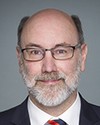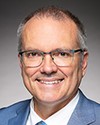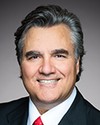Thank you, Madam Chair. I'll try to be as brief as I can.
Good morning, members of the standing committee.
On behalf of Air Canada, I would like to thank the committee for the opportunity to speak to you today.
Thank you for the opportunity to participate in this important study on aviation safety. My name is Samuel Elfassy, and I'm the managing director of corporate safety, environment, and quality at Air Canada.
I'd like to start by giving the committee a quick brief on Air Canada, and where we are today before examining several issues concerning safety in aviation.
Air Canada is Canada's largest domestic and international airline, serving more than 200 airports. It is one of the few global airlines now serving six continents through our recent expansion of service out of Montreal's Pierre Elliot Trudeau International Airport to francophone centres in Africa. We directly serve 64 airports in Canada, 57 in the United States, and 91 in Europe, the Middle East, Africa, Asia, Australia, the Caribbean, Mexico, Central America, and South America. Last year we carried close to 45 million passengers, putting us among the 20 largest airlines in the world.
Air Canada is experiencing incredible growth with very positive contributions to the Canadian economy. At the heart of this growth has been the strength of the workforce. That has increased to 30,000, with close to 2,500 jobs added over the last three-year period. It is important to note that almost all of our new employees serving the public are bilingual, and more than 50% of them speak both English and French.
We are also in the middle of an $8 billion fleet renewal plan that is seeing Air Canada aircraft and major components being built and supported across the country, and new jobs being created in the highly skilled aerospace manufacturing sector.
Further, we are well recognized as one of Canada's top 100 companies. We have been recognized for our diversity program and, most recently, for our hiring and promotion of women in all areas and all levels of the company.
Considering that in 2009, we were on what our CEO referred to as “a burning platform”, and had come out of CCAA in 2004, our turnaround is something that we are all very proud of. Through these challenges, the company has emerged strong, sustainable, and positioned for the future. As Air Canada turns 80 this year, sharing a milestone with Canada's 150th birthday, we remain focused on being a global champion for Canada and carrying the maple leaf proudly for the years to come.
In many ways this positive attitude is no better displayed than in our approach to safety. We have no higher obligation to our coworkers, our passengers, and our airline. Amongst our corporate values, safety is first. Canadian airlines, including Air Canada, are among the safest in the world and reflect the global trend that air transport continues to improve year over year and remains one of the safest modes of transportation according to the International Air Transport Association, based in Montreal, Quebec.
Still, safety is an in-progress product that demands constant attention, innovation, and investment. This is not simply the work of the airlines, but demands the participation of airports, providers, suppliers, and governments if the system is to function properly.
Strong regulatory frameworks remain the foundation upon which we collectively build and enhance aviation operations and the industry as a whole. Working together, we must learn from past experiences and take bold measures to pave the way forward.
Air Canada is pleased to see that Transport Canada is taking active measures to address the challenge and risk that drones and lasers have introduced in recent years. The Transportation Safety Board of Canada itself is recognized as an international leader in safety investigations, and their watch-list focused attention and efforts on critical threats facing aviation operations.
Further improvements can be made, in fact, with core airport safety upgrades, including precision approach aids, enhanced runway lighting, runway overrun protections, runway incursion devices and incursion radar equipment. That said, enhancing safety of airline operations requires continuous innovation and regulatory improvements. There are still valuable TSB recommendations and ideas that have not been implemented by Transport Canada.
Equally, international programs, such as flight data monitoring, now adopted worldwide and recognized by Air Canada as a world class program, are still not fully recognized by Transport Canada. We invite the government to address these issues to ensure that we hold our standing and professional standards with the international aviation community.
Similarly, changes and improvements to security rules, staffing support, and protocols, making the process more efficient and allowing airports and regions, and, yes, the airlines, to benefit through secure yet less bureaucratic and disruptive processing of passengers will ultimately allow us to fully realize sixth freedom advantages offered by our geography.
Of course, we too have to work hard, and so we continue to examine our practices, our initiatives, and work with our internal policies to ensure we are compliant with aviation regulations and that we recognize and adopt best industry practices. We fully support the IATA operational safety audit program and work with partners in alliances and colleagues across the industry.
In closing, I would like to offer that our industry is strong and plays an important role in setting and maintaining effective international standards. There will always be work to accomplish, but together we have the opportunity to employ our collective best and the brightest to tackle these issues.
Thank you for your time. I look forward to answering any questions. Merci.





